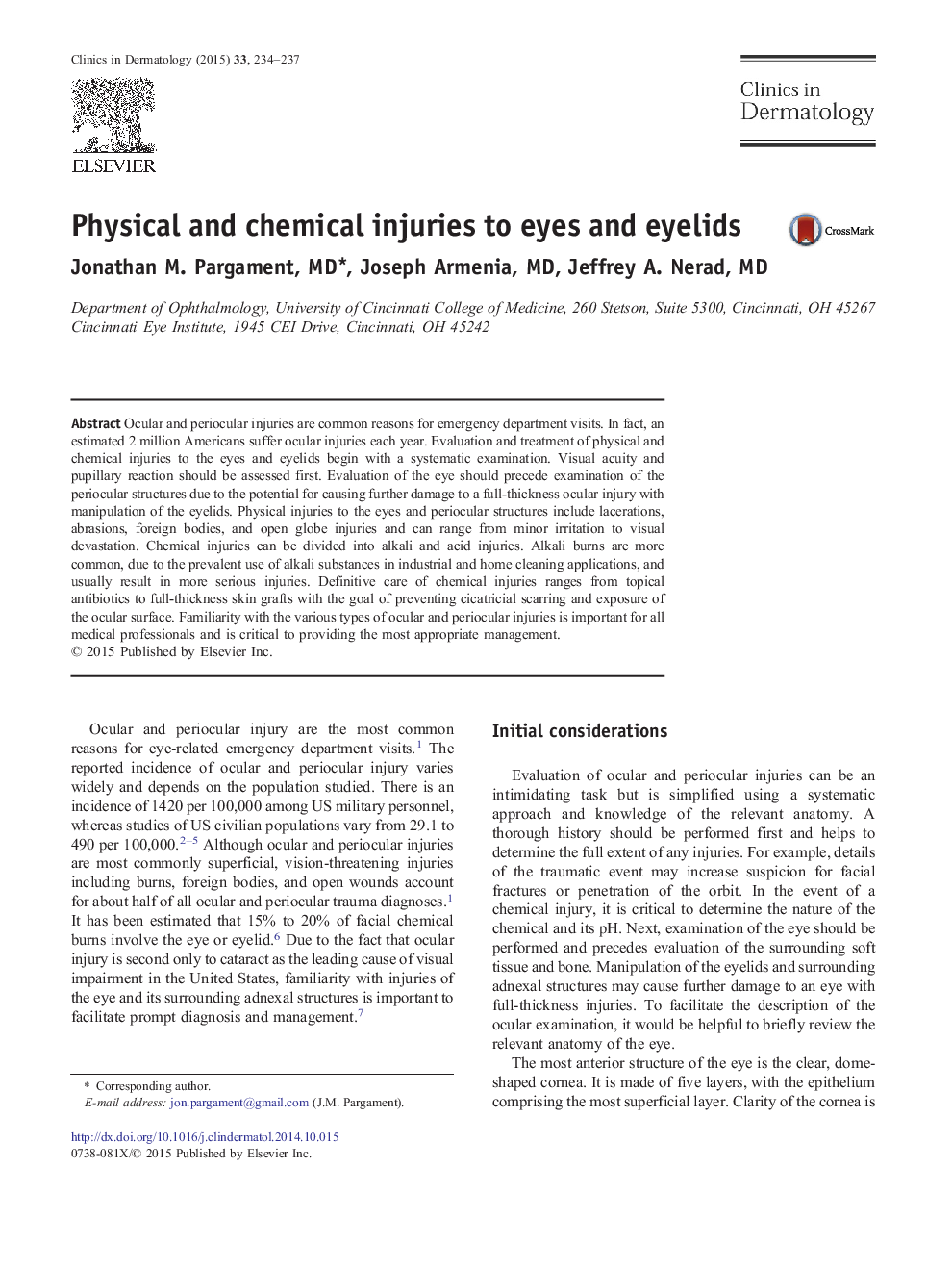| Article ID | Journal | Published Year | Pages | File Type |
|---|---|---|---|---|
| 3194169 | Clinics in Dermatology | 2015 | 4 Pages |
Ocular and periocular injuries are common reasons for emergency department visits. In fact, an estimated 2 million Americans suffer ocular injuries each year. Evaluation and treatment of physical and chemical injuries to the eyes and eyelids begin with a systematic examination. Visual acuity and pupillary reaction should be assessed first. Evaluation of the eye should precede examination of the periocular structures due to the potential for causing further damage to a full-thickness ocular injury with manipulation of the eyelids. Physical injuries to the eyes and periocular structures include lacerations, abrasions, foreign bodies, and open globe injuries and can range from minor irritation to visual devastation. Chemical injuries can be divided into alkali and acid injuries. Alkali burns are more common, due to the prevalent use of alkali substances in industrial and home cleaning applications, and usually result in more serious injuries. Definitive care of chemical injuries ranges from topical antibiotics to full-thickness skin grafts with the goal of preventing cicatricial scarring and exposure of the ocular surface. Familiarity with the various types of ocular and periocular injuries is important for all medical professionals and is critical to providing the most appropriate management.
